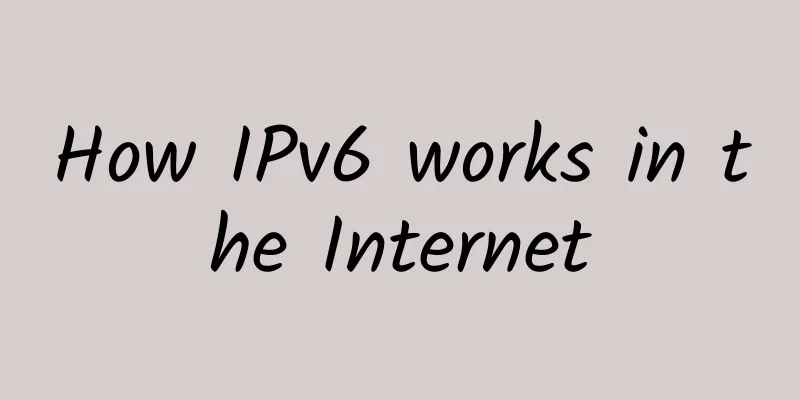5G private network is a big watermelon (Part 2): The mystery of the collision

|
In the first article of this series, we explained the new business opportunities and value chains brought by 5G private networks. If you compare 5G private networks to the ultimate "big watermelon", it is easy to understand why 5G private networks can become as popular as this small game. The reason is that the game that combines "2048 + Candy Crush + Fruit Ninja" has long been popular, so it is easy to learn how to make a big watermelon without any teaching. Compared with complex games that require long beginner's guides to play, it is easier to open up the market. Similarly, the digital and intelligent demands of various industries have given rise to a real desire for private network upgrades. The C-end public network market still needs to continue to explore new demands to paint a future for users, while the B-end private network market only needs to create solutions for the demands that have already been generated, and the threshold for market education is lower.
Compared with "cyberpunk" applications such as cloud gaming, VR/AR, high-definition live streaming, and Internet of Vehicles, which seem to be a long way off for most public network users, private network users' desire for 5G is obviously clearer, more pragmatic, and stronger. Interestingly, these industries that have been the first to implement 5G private networks all have certain commonalities, such as whether there is a large demand for machine networking, whether there are problems with wired network deployment, whether solutions can be replicated on a large scale, etc., which determine which industries can first taste the sweetness of 5G private networks. Therefore, if 5G private networks want to avoid the "false fire" of new technologies that always look beautiful but are hot to use, they must naturally tell everyone clearly which elements can collide first, how much energy will be generated, and what changes will be brought to the entire society and industry. Similar attracts similarity: The logic of the collision between 5G private networks and vertical industriesIn the previous series of articles, we mentioned that one of the biggest differences between private networks and public networks is that the public network will refine the common needs of individual users into unified related network indicators; while the private network is oriented towards the characteristics of vertical industries, providing highly customized and diverse network services. But have you noticed a problem, that is, the first batch of industry users in the construction of 5G private networks always appear frequently in some fields? For example, government affairs, electricity, coal mines, docks, and aviation. On the one hand, 5G can enable industries and change traditional business operations and operating models, which is the inevitable development path of communication technology; but on the other hand, the same result does not mean that its fit and influence with every industry are equally high. Just like in the mini-game, fruits that are closer together in the synthetic logic chain always collide faster. The wireless solutions provided by 5G private networks, as well as differentiated capabilities such as customization and security, are naturally attractive to some industries. What are the commonalities between these fields? In short, there are several characteristics: 1. Low customization requirements and high degree of replicability. Unexpectedly, the first industries to embrace 5G private networks are those with low customization requirements, such as coal mines, electricity, ports, and railways. "Customization" here means that after a private network for a certain business scenario is built, it can be quickly replicated in different work sites within the same group or in the same industry to achieve large-scale application. For both corporate customers and operators, it can effectively reduce costs and quickly get positive feedback from network upgrades. For example, port operations have similar demands for private networks, which are to use a private network to carry the traffic needs of workers, machines, and vehicles during intensive operations, avoid delays caused by public network congestion, and enable stable operation of a large number of unmanned equipment in scenarios with large regional spans, such as robot inspections, video surveillance, and remote dispatch of unmanned vehicles. Once a port private network is built, other ports can quickly launch corresponding capabilities with just a few adjustments. But if it is a private network for an industrial park, the situation is much more complicated. Industrial parks for high-precision manufacturing, new media parks that require low-latency CDN networks, financial parks that pursue high data security, etc., may require very different network capabilities and resource configurations, and their sensitivity to network upgrade costs is also different, and often require "case by case" deployment. Readers who have played the game "Synthesize Watermelon" know that the same fruits can always collide faster when put together, while the speed of synthesis is very slow when unripe fruits are piled together. If you are an operator, you will definitely start with industries that are easier to achieve economies of scale. 2. Wired network deployment is difficult and requires high digitalization. The explosive growth of digital traffic in all walks of life has put forward higher requirements for network "coverage" and "capacity". Especially for industries such as transportation and logistics, urban airports, industrial manufacturing, mining and petrochemicals, the improvement in quality and efficiency brought by digital technology is very significant. The data transmission rate needs to be increased a hundredfold, but if the new business is supported by wired networks, cables and optical fibers will be laid everywhere, which will not only affect the appearance of the city, but also cause unmanned vehicles, cranes, and airplanes to accidentally collide with network cables, which will be a bit scary. At the same time, these industries have a certain digital foundation and have accumulated certain management technologies and knowledge levels in their businesses. Overall, the difficulty of deploying 5G is relatively small. Therefore, these industries that are not suitable for building wired networks but have digital needs and payment capabilities have also become the first to embrace 5G private networks. 3. Low intelligence level, high social/industrial value. Of course, there are some areas that may not have such strong commercial value or payment ability, but have extremely high requirements for network security isolation and communication reliability, such as public security, firefighting, disaster relief and other scenarios. 5G private networks can achieve high-precision video transmission, which can greatly improve operational efficiency. The social value brought about by this can benefit everyone. There are also some remote areas with low levels of intelligence that are temporarily difficult to cover with fiber optic networks. Through 5G construction + private network support, intelligent capabilities can be quickly introduced to achieve a leap in network capabilities. Rural intelligence, smart distance education, etc. also have direct help in poverty alleviation and improvement of life in these areas. Therefore, there is no need to worry about the false enthusiasm of indiscriminate 5G construction. After all, the vertical industries that invest real money and the operators and third parties that provide services are more worried about the waste of resources than we are. Now that we have figured out the adaptation relationship between 5G private networks and industries, the next question is how exactly does technology collide with specific industries? 5G Private Network "Enabling" Industry RoadmapIn a click-and-play game, the chances and accidents caused by collisions always bring additional emotional value, making us develop a rebellious mentality amidst regret, irritability, and depression - I must make a big watermelon! But once we enter reality, we can no longer "play games". The collision between 5G private networks and vertical industries must have a clear roadmap and strategy to ensure that technology can activate new business value to the greatest extent. We roughly divide it into three steps: The first step is terminal automation. Whether it is docks, mining areas, or factories, these traditional industries have one thing in common, that is, the front-line business needs to rely on manual on-site operations. Not only is the working environment poor, but it is increasingly difficult to recruit suitable young people; and once the loading and unloading efficiency does not meet the requirements, it will cause problems such as cargo accumulation and slow mining. If you want to make the front-line operations develop towards unmanned operations, you must first build machine automation capabilities. Taking the dock as an example, wired fiber backhaul or unlicensed spectrum wireless (LTE-U, etc.) backhaul have pain points in terms of damage rate and bandwidth reliability, making it difficult to meet the needs of remote automation control. The reconstruction plan of the new port faces the concerns of shutdown and production reduction. The private network built based on 5G base stations can provide network support for these devices scattered on the front line of business, solve the network needs of the last mile, make intelligent video surveillance, robot inspections, unmanned cranes, etc. possible, and promote the intelligence, wirelessness and automation of edge devices. In the 5G private network that has been put into use, direct economic benefits have already emerged. According to data from the People's Post and Telecommunications Daily, by deploying the 5G network, the vehicle automation rate of Zhanjiang Steel has increased to 99%, saving about 4.6 million yuan in equipment communication costs each year. The second step is business localization. When the above-mentioned automation equipment is incorporated into business production, it is necessary to complete data collection, transmission, processing, and analysis. This faces two problems: one is data security. How to make sensitive data in the private network be isolated separately to achieve local cloud storage, transmission, and computing; the second is the stability of transmission. When high-traffic services are activated, the private network needs to transfer dozens of GB of files between the cloud and the local. If it takes too long and there are random freezes, it will also affect the user experience. 5G can effectively solve the above concerns by using slicing technology and MEC edge computing platform, which is equivalent to setting up different partitions for the game area, one for kiwis and one for grapes, so as to prevent the fruits from running around and causing trouble for each other. For example, in a smart factory, the industrial edge cloud on the 5G network side can fully meet the stringent requirements of AGV equipment for data link reliability and bandwidth during the production process. The large-scale deployment of AGV can greatly improve the company's production efficiency and management level, and realize intelligent and flexible production under the premise of "data does not leave the dedicated network." Integrating 5G private networks into current communication private networks to achieve local high-reliability, high-speed transmission has become a top priority for many industries to develop new businesses. The third step is cloud-based intelligence. A large number of automated equipment can complete local storage and processing. Is this the only capability of 5G private networks? If it only provides faster and better network communications, then 5G private networks cannot support their historical mission of “enabling vertical industries”. What really enables them to promote economic transformation and upgrading is the potential to bring intelligence into thousands of industries after network cloudification. In the traditional IT system architecture, applications and networks are relatively separated and independent of each other, so traditional cloud services (such as SaaS tools) need to be deployed separately. With the location advantage of 5G in multi-access edge computing nodes, services can be accessed to the cloud nearby. Some real-time services can be processed locally, while some latency-insensitive high-density computing or data storage are uniformly managed and distributed in the central cloud. The benefit of this is that for industry users, the business risks caused by downtime or operational accidents of a single public cloud service are avoided, and business cloud migration and network expansion can be flexibly realized on demand, and cloud-network integrated operation and maintenance and services can be obtained. Cloud computing power and intelligent applications can also be easily and quickly transferred to the industry end, accelerating the intelligent transformation. For example, many smart airports will install thousands of smart cameras in multiple locations (such as terminals, aprons, runways, taxiways and other areas that need to be covered). The 5G private network is connected to the cloud-based smart "brain" to build a real-time video platform, which can not only achieve high-definition dynamic monitoring and AI video analysis, but also meet the needs of airport operations, air defense, and emergency alarm rescue. With the help of high-throughput computing in the cloud, airports can continuously optimize security strategies and improve operational efficiency. The collision between 5G private networks and vertical industries in the above-mentioned industries is not a random stacking or coincidence, but a step-by-step approach after understanding the industry logic and implementation roadmap. In this rational and pragmatic collision, the innovation and imagination activated are naturally what people are eager for and excited about. Intelligence + connection will definitely change the entire society and our lives, and it is also a future picture connected by one "5G industry private network" after another. |
Recommend
BuyVM: Starting from $2/month, AMD Ryzen+NVMe+1Gbps unlimited traffic, KVM architecture, Las Vegas/New York/Miami
BuyVM is a foreign hosting company founded in 201...
Is 5G data expensive? Should I change my SIM card? Learn what you don’t know about 5G!
Do I need to change my phone or SIM card in the 5...
Ministry of Industry and Information Technology: Cancellation of data "roaming" fees will be implemented as scheduled in 2018
The State Council executive meeting on April 4 cl...
The history of the changes in Spring Festival Gala red envelopes: Why are Internet giants rushing to appear on the Spring Festival Gala?
The Spring Festival is getting closer and closer,...
A brief discussion on the organizational structure design of data center operation and maintenance
A data center is a complex organization with many...
Free WiFi is in trouble, experts predict: it may disappear in the future
According to media reports, due to high investmen...
10gbiz: $3.58/month KVM-1GB/30GB/15M unlimited/Los Angeles data center
10gbiz is a newly opened foreign hosting service ...
The three major operators earn 400 million yuan a day? ! China Mobile + China Telecom + China Unicom + China Tower < Tencent
Recently, the three major operators have successi...
How to open a 5G automatic account? Let’s follow Brother K to find out!
The recent projects are not very busy, so Brother...
The unlimited package that people love and hate is going to be cancelled
[[272811]] The "unlimited data" package...
What are the new features of HTTP/2 compared to HTTP/1.1? How to solve head-of-line blocking and header compression?
[[398710]] This article is reprinted from the WeC...
IPv4 addresses are exhausted, but the utilization rate of IPv6 addresses in China is only 0.5%
"With the widespread and in-depth applicatio...
SmartHost: $4.95/month KVM-quad core/8GB memory/40GB NVMe/2TB monthly traffic/29 data centers available
SmartHost recently offered special discount codes...
5G development has reached a critical turning point
"5G currently covers all county towns and ur...
Exclusive interview with Li Xiaodong from DYXnet: Using SASE to strengthen network boundaries and provide “cloud-edge-device” security empowerment
In today's digital age, the stability and sec...









